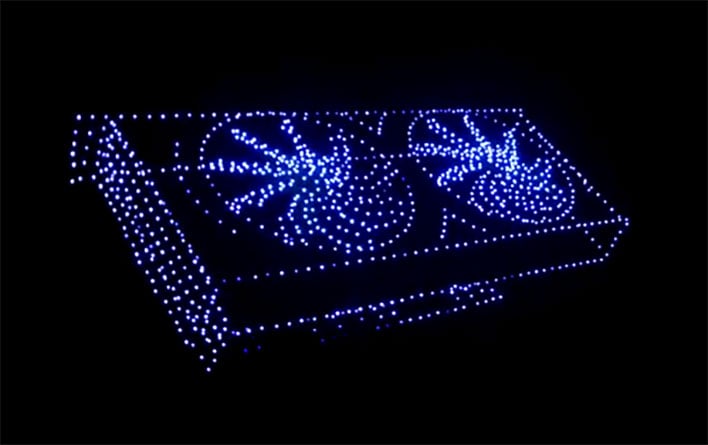Did Intel Just Tease Its Design For Alchemist Arc Discrete Graphics Cards?
In case you missed it, Intel kicked off the week by revealing a new brand name for its upcoming consumer high-performance graphics products. It is called Intel Arc, and it not only covers hardware products, but also related software and services, and will span multiple hardware generations. The first of those will be Alchemist (formerly DG2), and as we wait for it to launch next year, Intel has now offered up a teaser of what one of the cards could look like.
Intel also noted that all product plans and roadmaps are subject to change without notice, though given that we initially anticipated its first modern discrete graphics card for gaming to arrive by the end of this year, we'd be surprised if we did not see a 2022 release, as is now being promised. What we don't know, however, is exactly what the first products will look.
A short video posted to Twitter may give us a glimpse. Take a look...
We’ve painted pixels in the sky with 1,000 Intel drones. Now, that’s a visual experience. What will you create next? https://t.co/FYeygLy6Oh #IntelArc #inteldrones #inteldronelightshows #dronelightshows pic.twitter.com/c0Q4ycNYVS
— Intel Graphics (@IntelGraphics) August 17, 2021
"We’ve painted pixels in the sky with 1,000 Intel drones. Now, that’s a visual experience. What will you create next?," the Intel Graphics account posted.
The tweet also links to Intel's Arc landing page, where it doubles down on plans to launch Alchemist in the first quarter of next year. As to what it could look like, the lit-up drones morph into the shape of a graphics card starting at the 37-second mark, and we clearly see a dual-fan cooling shroud. It also appears to be a dual-slot design.
It could also be a 2.5-inch slot design, which if that is the case, it would effectively occupy three expansion slots in PC. To our eyes, however, it looks like a two-slot card.
We also count nine fan blades on each fan. For what it is worth, a previously leaked photo of a supposed DG2 prototype also sported a dual fan design, with nine fan blades on each fan. And that was a depicted as a dual-slot card as well.
That at least lends some credence to past leaks, which indicate the DG2 (now called Alchemist) will arrive with 512 execution units, a 2.2GHz clock speed, and 16GB of GDDR6 memory tied to a 256-bit memory bus. Past rumors have also suggested Alchemist will offer performance roughly in line with a GeForce RTX 3070 Ti.
Obviously it's still early, so all that stuff remains to be seen. However, Intel has confirmed that Alchemist will fully support DirectX 12 Ultimate, feature hardware-based real-time ray-tracing, and leverage artificial intelligence (AI) for its take on supersampling (so it sounds like Intel's approach might be closer to NVIDIA's DLSS than AMD's FidelityFX Super Resolution).
We are quite excited about having a viable third player in the discrete GPU space, and cautiously optimistic that Intel can be a competitive force, especially after viewing Intel's Arc sizzle reel with various gameplay footage. More competition would be a good thing, and if Intel can get more gaming GPUs in the hands of gamers, then hey, all the better.


